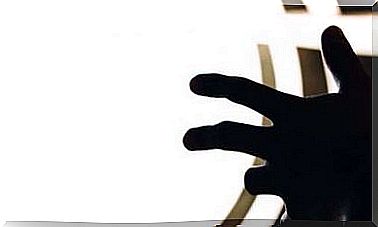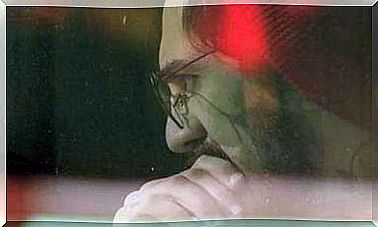Don’t Run Away! Avoiding Situations Is Not Always The Best
Avoiding certain situations that cause us fear or anxiety can provide immediate relief, but it is not always the best option: we lose confidence and feed our fears.

If there is something that truly distinguishes man from other living beings, it is an innate ability to complicate life. It is difficult to find a single animal that, being able to do the easy, does the difficult.
On the other hand, the human being has proven to be very creative when it comes to generating situations and psychological labyrinths that, in many cases, end up becoming dead ends. And in the human art of embittering life, perhaps the most sophisticated and harmful technique is the one that consists of not facing what we fear, thus avoiding one problem in this way creates a greater one.
We have all had experiences in which we faced with little success or in which the defeat was so painful that we decided not to tackle them again.
The smallest of trifles can mutate into an uncontrollable dragon when someone gets used to avoiding it. But we are not always aware that simply avoiding a dreaded situation over and over can lead to misfortune and loss of confidence.
Each time we opt for avoidance, it gives us back a wounded and weakened image of ourselves.
Therefore, when life puts us in front of similar situations again, it is not only the memory of our past that hurts us, but the fear of failing in the future.
What happens when we don’t face our fears
A typical scene in scary movies is one in which a character hears a noise and instead of fleeing decides to investigate, which usually costs him his life. The scene seems absurd to us, since common sense dictates the opposite: if you fear something, avoid it.
Why have a hard time? Why risk not being up to the task and discovering that you are not what you thought you were? It is not pleasant to perceive that life resists us, that is why we withdraw from what causes us pain, suffering or uncertainty.
The problem is that, if you persist, the apparent salvation is only temporary and your self-confidence is badly hurt. And that, as Honoré de Balzac said : “Resignation is a daily suicide.”
Or expressed in another way, the method of avoidance perpetuates and worsens our fear, since by losing confidence in ourselves our energy is less and less, while what frightens us becomes greater and greater.
When we talk about the need to face the feared, it is not necessary to resort to grandiose actions or heroic challenges. It is enough to recognize the number of decisions, actions and changes that we put off for fear of not being able to tackle them successfully.
What makes us put off improving our dietary habits? Or clarify with someone a personal issue that concerns us? Why is it so difficult to study in advance instead of waiting until the last minute? With all this, it is not surprising that we develop theories to reassure ourselves, which can lead to the most perverse of deceptions: self-deception.
The all or nothing syndrome
Many of the people who consult us present us with a common dilemma that makes them suffer. We call it the “all or nothing syndrome.” It is a sneaky way to avoid what is feared.
“Tomorrow I will start the diet, I will go to Pilates, I will be more organized, I will do a planning and I will get to work …”. This approach, which seems very rational at first, tends to hide the mental image of “being perfect” or “making it perfect.”
The problem is that the person, faced with the great work and effort that they will have to face, finds themselves in a bind: being perfect will be so expensive that it may not be worth the effort. And he thinks, “Why start? I will surely fail!” . With what that promised tomorrow never just arrived.
Procrastination is a subtle form of avoidance. If we find that we are procrastinating over and over again it can be helpful to stop and think about what it is that we are dreading. Fear and avoidance enhance each other.
The philosopher and psychotherapist Bernardo Ortín usually tells in his workshops that fear is a very well-educated ghost. If we say, “No, not now, please,” he waits respectfully, only to appear bigger and scarier next time. Our resignation feeds fear and makes it grow, sometimes to unsustainable limits. When that happens the person can fall into the pit of anguish.
When help doesn’t help
Squaring the circle of avoidance comes with well-meaning helpers onto whom we discharge some of the responsibility for facing our fears. “I only drive if he accompanies me” or “I can do it but I take medication before I go” are phrases that are often heard.
Some people, for example, only leave the house after making sure they have a pill with them. This makes it easier at first to face certain situations, but be careful, because when you can only face what is scary if you receive that help, you could be feeding your own disability.
An anxiolytic helps to cope with a stressful meeting. It seems to work. The medicine sends a direct message to the unconscious: “I calm you down.” But he also whispers, “You just couldn’t. You depend on me.” Which of those two messages goes deeper? “I calm you down” or “You can’t”?
The loving wife who always accompanies the husband who is afraid to drive since he suffered a mishap suggests two messages. The first is: “I accompany you because I love you”; but the second could be lethal: “Alone, you can’t.”
Does that mean we can’t get assistance or medication? Of course we can, as long as it is a temporary help, not a permanent one.
You have to be alert to be aware of when these aids are the only way to deal with a situation, because there is avoidance present: the person gives up doing it alone.
Traps that are easy to fall into
Another way to fall into the avoidance trap is to try to find answers and certainties to the uncertainty that fear generates. When in doubt, a person looks for as much information as possible before acting, believing that if they don’t think about it enough they could make a fatal mistake.
Find something that guarantees that you will be one hundred percent safe. But the pursuit of safety is avoidance’s best friend. “If he knew for sure that” is what someone who avoids facing a situation tends to say.
It is common to try to ward off fear through thought. When doubts grow, they can run wild: “Traveling by plane is dangerous, I prefer not to fly”; “People overwhelm me, so I better not go out.” Sheltering at home can be a solution, but there are also dangers lurking: accidental falls, dizziness, heart attacks, intruders … everything fits in the imagination, with which the person increasingly renounces more things.
If fear increases with it our defenselessness grows. We can fall into absurd behaviors in order to avoid pain or what we think will bring us suffering or difficulties. To illustrate this, Paul Watzlawick, creator of what is now known as Brief Therapy, used to tell the story of the man who scared off elephants by clapping his hands every few seconds.
When he was questioned about the reason for such a strange action, he replied: “I do it to scare off elephants.” “Elephants? But there are none here!”; to which he replied, “You see? It works!” The man in the story believes he is safe because he has managed to avoid an unwanted situation, without understanding that it is precisely this excess of avoidance control that makes the situation untenable.
How to get out of the vicious circle of avoidance
Giving up certain actions creates security, but it can also make us poorer. There are more constructive attitudes:
- Realize that you are avoiding. Are you stopping doing things that you used to do out of fear of something? Is there something that arouses your curiosity and that you would like to do?
- Review the question. The fact of resigning, has it helped you to improve that matter in the medium or long term? Does this avoidance increase or decrease your self-esteem? Make a list of things that you avoid and order it according to the effort that it takes to face them.
- A good idea is to start doing one of the things on that list each week, starting with the simplest. The goal is not to do it well, it is simply to do it. In fact, doing something half-wrong is preferable to not doing it.
- We reward attempts, not successes. That implies that we can break up a task into a series of small steps. For example, if I want to tidy up a chaotic room, I can start by making the bed. If I want to start going to the gym, a first step is to prepare the bag and show up at the door of the building without having to enter.
- If you have many doubts and do not realize that deep down they are a way to avoid, you can choose a simple matter and decide to heads or tails. When there are many options – and the topic is not very relevant – using a die is a good solution: its 6 faces allow the options to be numbered. You simply follow what chance suggests.
- Remember that “no one is born a master”, so that only by facing and learning can you get what you want. It is said that a tourist asked a New Yorker how to get to the Carnegie Hall concert hall. To which he replied: “Practicing!”
- Accept the fear of failure. As we have seen, behind avoidance the panic of failing or not getting what you want is hidden. In relationships, for example, the fear of being rejected or abandoned may be what prevents you from facing difficulties. Behind that curtain of fear, we hesitate and wonder how to do something, trying to make sure that everything will go well. Sometimes, looking for the perfect way to do something, we think and think obsessively, which generates an exhaustion that prevents us from moving forward.
That stagnation is a convoluted way to keep avoiding … which weakens us even more. Behind the avoidance lies a very simple and human logic: “Since I will not do it well, I better not do it.”
We have the fantasy of being able to do anything successfully. Being able to drive calmly when one is a nervous wreck, appear calm in a stressful situation, be brave in a situation that inhibits …
- Participating is the important thing. In all these circumstances, and in many others, feeling that we will not be at the height imagined can make us throw in the towel even before we start, without realizing that sometimes, to achieve self-esteem, it is enough to participate.
Living and experimenting gives you strength
Today we have to learn to win; tomorrow we will win. Or as the writer Mary Anne Evans said : “No one graduates in the art of life without having failed.” What do we avoid? Let us become aware once and for all of the things that we stop facing and let us realize what our ghosts are.
Deciding to put an end to avoidance is a job that will undoubtedly bring us great benefits. We must remember that if the circle of avoidance weakens us and lowers our esteem, starting to face the feared, even with very small steps, has the opposite effect.
Doing things that we had stopped doing is a balm for self-esteem and trying others that generate some suspicion can become a healing experience.
Let’s ask ourselves: what little thing could you start rehearsing today? If what leads to avoiding a certain company is the fear of not being successful, the therapeutic proposal would be: “Do it, do not try to get it right, do not care too much if it does not work out at all”.
Maybe it’s taking a dance class and giving yourself permission to do it regularly. Or allow yourself to face a situation with nervousness or without much experience. Thinking that we are going to do something right the first time is an absurd illusion.
So let us see fear as an invitation to experiment and thus expand our way of life, also enjoying the learning that, like extraordinary treasures, is hidden behind mistakes.









